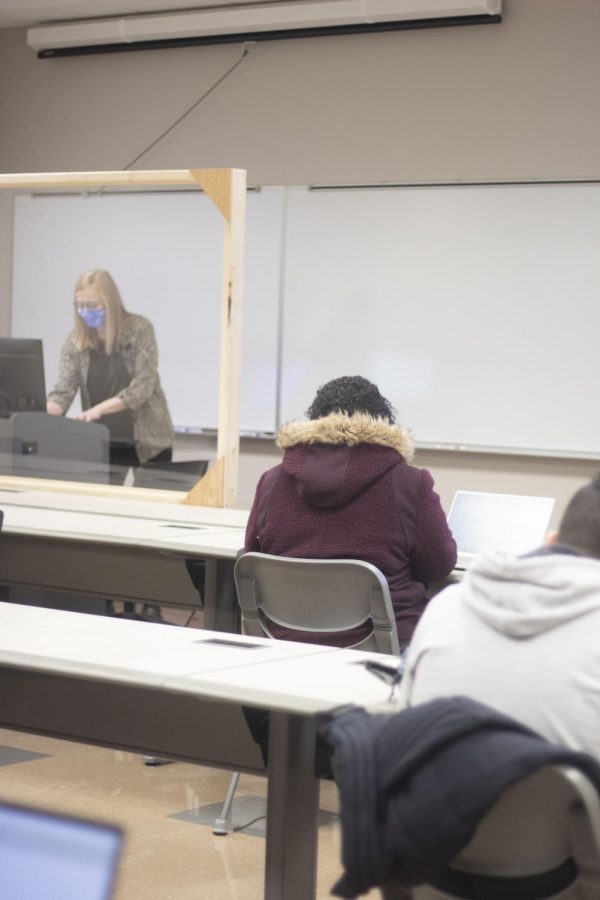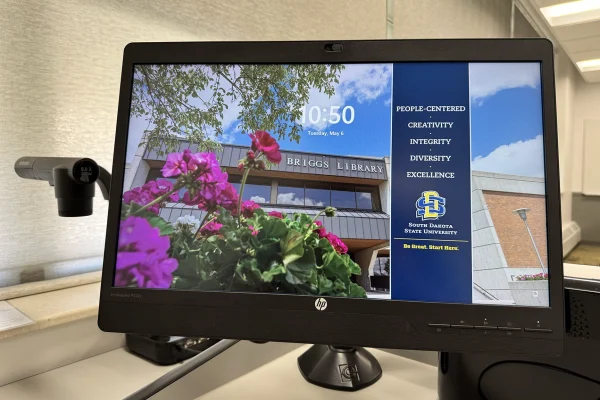Students and teachers establish norms with online, hybrid instruction
February 2, 2021
Almost one year since South Dakota State University announced all courses were to be moved online, university officials and students agree that a new normal has been established.
Classes were “temporarily” moved online March 23, 2020, but ultimately students finished out the academic year with online courses in May. Since then, SDSU has continued COVID-19 restricted courses into the 2020-21 school year.
“Without a doubt it has been a difficult 10 months for students, faculty and staff members alike, but we have maintained student learning and kept students on track of timely achievement of their degrees,” Provost of Academic Affairs Dennis Hedge said.
With this new normal, changes have been made to the amount of online, hybrid and face-to-face courses offered at SDSU.
According to Hedge, in the fall 2020 semester, 268 face-to-face courses were moved to online, and this spring semester, only 78 face-to-face courses were moved online. There were 711 hybrid courses this past fall compared to 616 this spring. Of the 1,994 course sections offered this spring semester, 809 are face-to-face, 616 are hybrid and 569 sections are online.
SDSU continues to face challenges since the switch to hybrid and online courses. Kevin Sackreiter, director of the Center for Enhancement of Teaching and Learning, sees engagement as being the biggest challenge.
“I think that engagement in some settings, especially that hybrid setting, has probably lacked a little bit, and I think that it has been frustrating for faculty and students,” Sackreiter said.
Hedge agrees that engagement has been challenging for both faculty and students.
“I think we miss engagement, student-to-student interactions and faculty-to-student interactions,” he said. “Student success data tells us that those interactions are very important for student persistence and the ultimate achievement of their degree.”
Since the switch to online and hybrid courses, Hedge reports anecdotal evidence of higher dropout rates, but does not attribute the increase in dropouts to online or hybrid course instruction.
He also says the main causes for students leaving SDSU were largely “financial concerns or students feeling a need to return home, sometimes because family members have either had economic impacts because of COVID-19 or illness impacts because of COVID-19.”
Since the change to COVID-19 restricted courses this fall, students agree their grades have remained relatively the same while taking hybrid and online courses.
Rylee Honomichl, a freshman at SDSU majoring in human biology, saw the potential for lower grades, but says, “It just took a lot more effort to keep it up.”
Harliann Baas, a freshman political science major, feels similar to Honomichl.
“If you weren’t putting in as much effort as you thought you would, you definitely would see your grades slip,” Baas said.
Even with the challenges of COVID-19-restricted courses, students and faculty agree there have been benefits to online and hybrid courses. Students enjoy the flexibility and versatility that the courses offer. University officials also say faculty have been able to learn how to best deliver courses and engage students in a virtual setting.
“Faculty seem confident, understand what they need to do and are certainly ready to tackle hybrid and online courses,” Sackreiter said.
Reis Bruley, vice president of Students’ Association thinks SDSU students are also more confident about hybrid and online courses after experiencing the COVID-19 restrictions this fall semester.
“Students have a semester down where they learned what works best for them,” he said.
Students and university officials remain hopeful for an all face-to-face 2021 fall semester, but still foresee hybrid and online courses being used in the future. Hedge said the main unknowns that will affect how SDSU proceeds next fall will be the availability of COVID-19 vaccines and the overall success of the vaccine.






















